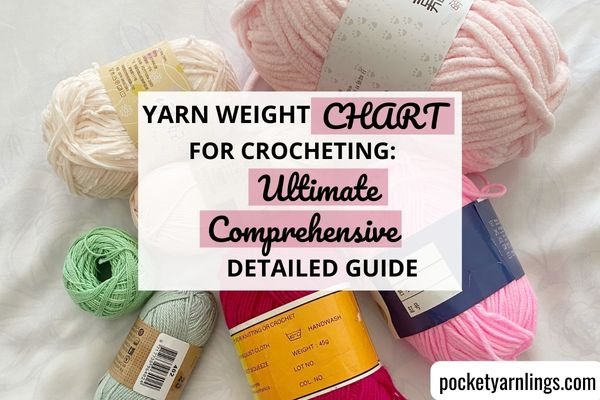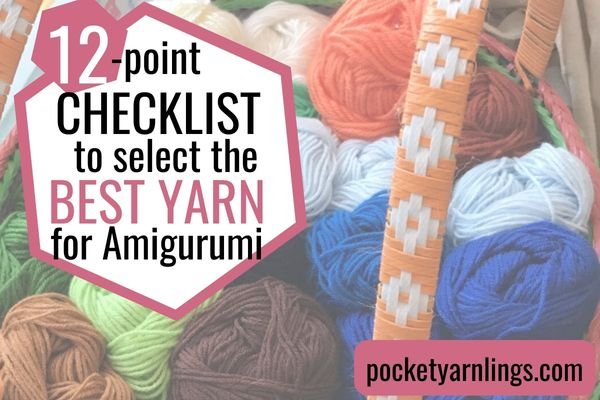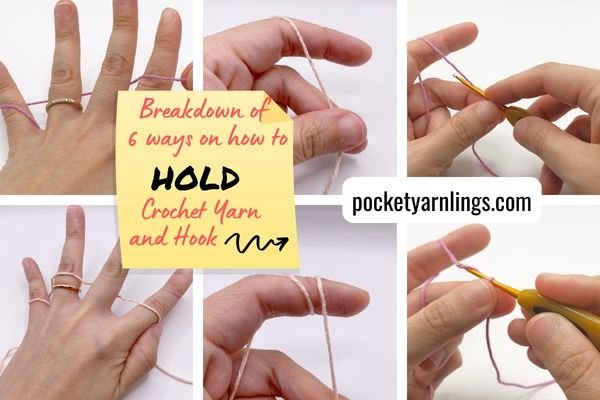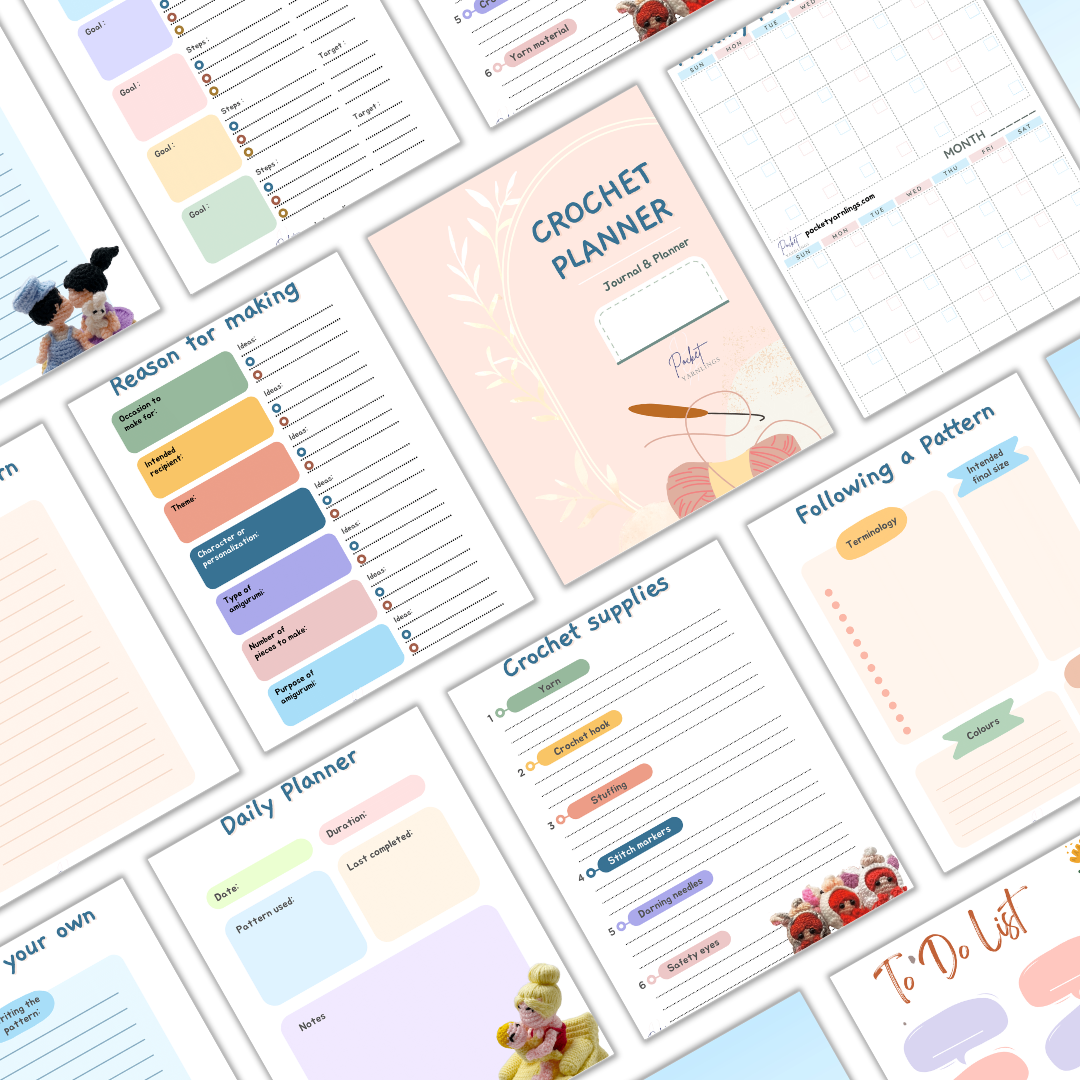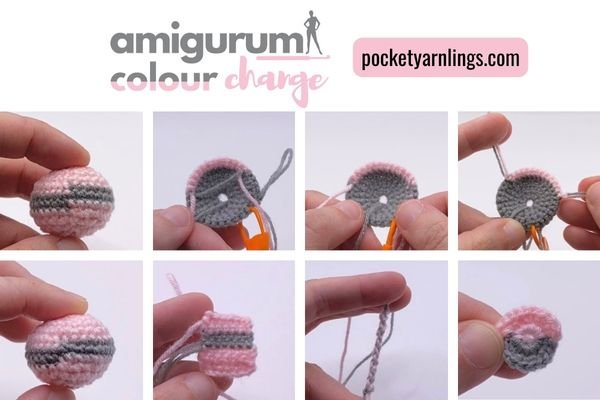How to Keep Yarn from Tangling: Simple Tips to Avoid Frustration
Are you tired of dealing with tangled yarn every time you start a new project? Untangling yarn can be frustrating and time-consuming, not to mention it can ruin your crochet experience. Fortunately, there are several tips and tricks you can use to keep your yarn from tangling in the first place.
Here we will be discussing how to choose the right yarn initially and organizing it to prevent tangles, how to untangle yarn and how to deal with tangles when using multiple yarn colours, and finally how to maintain yarn to prevent tangles.
Table of Contents Show
There are affiliate links in this post. We will receive a commission if you make a purchase through our affiliate link at no extra cost to you.
How to Choose the Right Yarn to Prevent Tangles?
When it comes to preventing yarn tangling, choosing the right yarn is an important first step. Here are some things to consider:
Understanding Yarn Weights
Yarn weight refers to the thickness of the yarn. The weight of the yarn you choose will depend on the project you are working on. For example, if you are making a plushie toy or scarf, you may want to choose a bulky weight yarn, while a lightweight yarn may be more suitable for a small play toy or summer top.
Some common yarn weights include lace weight, the thinnest for delicate projects, fingering weight and sport weight used for amigurumi, worsted weight for hats and scarfs and bulky weight for blankets and winter garments.
The likelihood of yarn tangling is not necessarily tied to a specific weight category but can depend on various factors. Yarn may tangle due to its texture, fibre content, how it's wound, and the overall quality of the yarn. However, certain characteristics associated with yarn weights may influence tangling.
For example, fine or lace-weight yarns, being thinner, may be more delicate and prone to tangling if not handled carefully. On the other hand, super bulky yarns, due to their thickness and weight, might be less likely to tangle but could be challenging to manage in terms of bulkiness.
Selecting Yarn Materials
The material of the yarn you choose can also affect how prone it is to tangling. Here are some common yarn materials and their characteristics:
Wool: Wool yarn is warm and durable, but it can be prone to tangling. Look for wool yarns that are tightly spun to help prevent tangling.
Cotton: Cotton yarn is lightweight and breathable, making it ideal for summer projects. It is less prone to tangling than wool yarn.
Acrylic: Acrylic yarn is affordable and easy to care for. It is less prone to tangling than wool yarn, but it can be more prone to static electricity.
How do you Organize Yarn so it Doesn't Tangle?
When it comes to keeping your yarn tangle-free, proper storage is key. Here are a couple of tips to help you store your yarn properly:
Using Yarn Bowls
Yarn bowls are a great way to keep your yarn from tangling while you work on your project. A yarn bowl is a container with a hole or slot that allows you to pull the yarn through while keeping the ball or cake secure.
These bowls usually have a curved cutout that allows you to easily pull yarn from the ball while keeping it contained in the bowl. Yarn bowls can be made from a variety of materials, including wood, ceramic, and plastic.
Storing Yarn in Bags
A yarn bag is a drawstring bag that you can place your yarn in while you work, preventing it from rolling around and tangling. Also, if you’re not using your yarn, it's important to store it properly to prevent tangling. You can use a plastic bag or a cloth bag, depending on your preference. Make sure the bag is big enough to hold your yarn and has a closure to keep your yarn from falling out.
When storing your yarn, it's important to keep it away from direct sunlight and moisture. Sunlight can cause the colours to fade, while moisture can cause the yarn to become damp and prone to tangling.
How do you Keep Yarn from Getting Tangled?
Crocheting is a relaxing and rewarding hobby, but there's nothing more frustrating than tangled yarn. Here are some tips to help you prevent tangles while crocheting.
Managing Yarn Tension
One of the most important things you can do to prevent tangles is to manage your yarn tension. If your yarn is too loose, it can easily tangle and knot. On the other hand, if your yarn is too tight, it can be difficult to work with.
To manage your yarn tension, try wrapping the yarn around your fingers a few times before you start crocheting. This will help you control the tension and prevent tangles. You can also adjust the tension as you go by pulling the yarn tighter or looser as needed.
Check out this useful article on “Breakdown of 6 ways on How to Hold Crochet Yarn and Hook” which helps with adjusting the tension of how you crochet.
Using Yarn Swifts and Winders
One of the most effective ways to prevent yarn from tangling is to wind it into a ball or cake before you start working with it. To do this, you would need a yarn swift or a winder. Yarn swifts hold your skein of yarn in place while you wind it into a ball, and winders help you wind the yarn quickly and evenly.
Using a yarn swift and winder can save you a lot of time and frustration, and it can also help you avoid tangles. When you wind your yarn by hand, it's easy for the yarn to tangle and knot. But with a swift and winder, the yarn stays in place and winds smoothly.
Free Crochet Planner Journal!
Click here to grab this 20-paged workbook and checklists that will help organize your creativity before you even start on your next crochet project! Or click on image on the left.
How to Untangle Yarn?
If you're a crocheter, you know how frustrating it can be when your yarn gets tangled. Here are two techniques that can help you untangle your yarn with ease.
The Butterfly Method
The Butterfly Method is a simple technique that involves winding the tangled yarn into a butterfly shape. To use this method, follow these steps:
Hold the tangled yarn in one hand and use your other hand to make a loop around your thumb. Then continue to wrap the yarn around your little finger.
Keep winding the yarn around your thumb and little finger until you have a butterfly shape.
Use the end of the yarn to tie a loose knot around the centre of the butterfly.
Gently pull the yarn from the outside of the butterfly to unravel it.
This is a useful youtube video on how to carry this out.
Working from the Outside In
Another technique for untangling yarn is to work from the outside in. This is a good option if the yarn is only slightly tangled. Here's how to do it:
Start by finding the end of the yarn that's on the outside of the tangle.
Gently pull on this end of the yarn to unravel it.
Continue pulling the yarn from the outside of the tangle until you reach the knot.
Once you've reached the knot, gently pull the yarn from the other side of the tangle until it's completely unravelled.
How to Keep Yarn from Tangling when using Multiple Colours?
We have covered some ways to prevent tangling and how to proceed when your yarn gets tangled. For this section, we will be covering how to keep yarn from tangling when you are using yarn of multiple colours, especially for when you are crocheting colourful amigurumi or even C2C crochet. These crochet projects often involve multiple colour changes and as a result, can result in yarn entanglement.
Techniques to Prevent Tangling with Multiple Coloured Yarn
Untangle Regularly
To avoid larger, more complicated tangles, take regular breaks to untangle your yarn as you work. This can be done by gently pulling apart any knots or twists in the yarn.
Additionally, when working with multiple colours, such as three different hues, ensure that the trailing yarns being used are flipped around and separated to avoid overlap during the crocheting process. This practice contributes to a smoother workflow and helps maintain organized yarn strands.
Carry Yarn Along when Changing Colours
When changing colours, carry the unused yarn along the edges of your work. This prevents tangling by keeping the yarn in place without twisting or looping around each other. Check out this comprehensive article on colour changes in amigurumi here.
Cut and Rejoin when Changing Colours
If the colour change is significant or the yarn is prone to tangling, consider cutting and rejoining the yarn. This allows for a clean start with minimal risk of tangles.
Avoid Pulling Yarn from the Centre
When dealing with multiple colours, refrain from pulling yarn from the centre of the ball, as it can cause collapse and tangling. Opt for pulling from the outside, rotating as you work, for a smoother and more controlled yarn flow, minimizing the risk of tangles.
Use Smaller Amounts of Yarn from Main Skein
Instead of working directly from the main skein, wind smaller amounts of each colour into separate balls. This ensures better control and reduces the risk of tangling.
Making Yarn Butterflies
Create yarn butterflies by winding each colour around your fingers before securing it, especially for the smaller amounts of yarn I mentioned in the previous point that has been taken out from the main skein. This portable yarn organization method prevents tangling and ensures smooth colour transitions.
Equipment to Prevent Tangling with Multiple Coloured Yarn
Yarn Bowls
Yarn bowls provide a stable and contained space for your yarn while working. The yarn can be pulled through a cutout, keeping it untangled and under control.
Yarn Guide Rings or Separators
Use yarn guide rings or separators to keep different colours separated and organized. These tools are particularly useful when working with multiple strands.
Yarn Bobbins
Wind each colour onto separate yarn bobbins, which can be easily managed and prevent tangling. Bobbins are practical for colourwork and tapestry crochet. Check out more information on how to use a yarn bobbin holder below.
DIY Yarn Holders
Create DIY yarn holders using materials like paper towel rolls or plastic containers or zip lock bags. These homemade solutions can effectively keep your yarn organized and tangle-free. See how household items can be used as DIY yarn holders below.
Empty Box
Use an empty box with dividers to keep multiple yarn balls or cakes separate. This DIY solution is budget-friendly and provides a structured space for each colour. Check out the video here on how to use a simple empty box to help with preventing yarn tangles when crocheting with multiple colours.
How to Maintain Your Yarn to Prevent Tangles?
This last section is simply about maintaining your yarn, apart from just storage, to keep it in good shape for your next crocheting project and prevent any tangles in the interim.
Regular Checks for Knots
One of the most important things you can do to prevent tangling is to regularly check your yarn for knots. Knots are often the culprit when it comes to tangled yarn, so it's important to catch them early. As you work with your yarn, take a few moments to examine it closely for any knots or tangles. If you do find a knot, gently untangle it and continue working.
Keeping Yarn Clean
Another key to preventing tangling is keeping your yarn clean. Dirt and debris can cause the fibres in your yarn to stick together, leading to tangles and knots. To keep your yarn clean, store it in a clean, dry place when you're not using it. If you're working with yarn that's particularly dirty, you may want to wash it before using it. To do this, simply soak the yarn in lukewarm water with a mild detergent for a few minutes, then rinse it thoroughly and lay it flat to dry.
Conclusion of How to Keep Yarn from Tangling
In summary, maintaining an organized and tangle-free yarn experience in crochet involves thoughtful yarn selection, proper storage, tension management, and strategic techniques when working with multiple colours. Utilizing tools like yarn bowls, guide rings, and bobbins enhances organization, while regular checks for knots and cleanliness contribute to ongoing maintenance.
By incorporating these practices, crocheters can ensure a smooth and frustration-free creative process with their yarn, especially when it comes to crocheting with multiple colours – like I do with my amigurumi!
Free Crochet Planner Journal!
Click here to grab this 20-paged workbook and checklists that will help organize your creativity before you even start on your next crochet project! Or click on image on the left.



